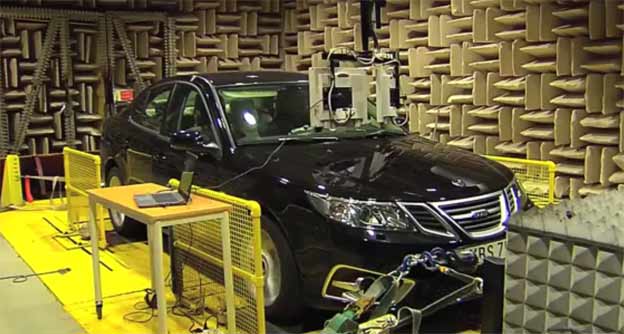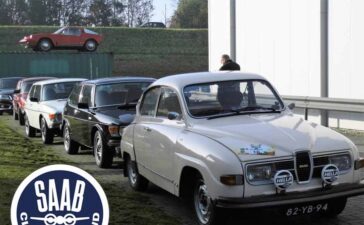Since “dieselgate” exploded a few years ago, “Diesel” has become an undesirable word in the automotive industry. This fuel and the corresponding type of engine enjoyed special popularity in Europe, not so much in other markets, except in the case of trucks. However, in the meantime, it has been established to what extent the diesel engine can be dirty.
New generations of diesel engines emit relatively less CO2 than the corresponding petrol engine, and with the new Euro 6D emission standards in Europe, nitrogen oxide emissions are almost identical, with 0.06 grams per kilometer for petrol and 0.08 for diesel. However, it seems that it is too late to save the “Diesel engine”.
Table of Contents
Fiat – Saab – GM Cooperation
But, some do not think like this, such as the Stellantis conglomerate, which estimates that full electrification of vehicles is still a long way off, and makes it necessary to exploit the potential of internal combustion engines. Within the Stellantis Corporation are of course Fiat and the PSA group where Opel is located. Connoisseurs are aware of the fact that the cooperation between Fiat and Saab is long-lasting, and later through the GM group it was further strengthened and that the result of this cooperation was the implementation of diesel engines in Saab cars that were previously in favor of gasoline engines.
Admittedly, in some markets such as Europe, the diesel engine option in Saab cars is a bit late, but within the Fiat-GM cooperation, a great diesel like the 1.9 TTiD engine was born very quickly, which is still not surpassed by other manufacturers. Of course, mostly because they gave up on the further development of diesel engines ten years ago due to the planned electrification.
If we let our imagination run wild, and imagine that Saab Automobiles still exists and manufactures vehicles, then we could imagine that this new diesel engine just introduced by the Stellantis conglomerate could be fitted to new Saab cars (assuming that these the two companies continued to work together for reduced development costs).
New Euro 7 Diesel by Stellantis?!
In an era where there is mostly talk of launching current electric models, the announcement of a new diesel engine approved for Euro 7, the Italian one, is a real miracle.
A technical project that will see the light in 14-15 months and could open up a whole series of unexpected commercial perspectives in this era, was revealed by the great boss of Stellantis himself, Carlos Tavares, on the occasion of a visit to the plant in Campania. We are in the field of hypotheses, because nothing official has yet been leaked from Stellantis about the opportunities for using this Euro 7 on the cars of the group. But the fact remains that the much (by some) reviled diesel, in a renewed and even cleaner version, can return to the spotlight and make its contribution to reducing harmful emissions, thus “extending” the life of the entire “traditional sector “.
The news here implies a change of strategy not so much in product planning, because this engine was obviously approved some time ago, as in communication: diesel can come out of limbo, it can return to play a role in the agenda of large groups, without shame and uncensored. The rest will tell the market.
The possible use of this unit in the automotive sector of the Franco-Italian group has not yet been officially confirmed. However, the project is there in the meantime, and it could give hope to those who in the meantime still cover a huge number of kilometers every day, without finding an alternative to the expensive, “old” diesel on the market.
Lower Emissions
The new “Euro 7” will basically have some points of convergence with the current 2.2 diesel-powered Euro 6d – Final approved for commercial vehicles and those of similar displacement, but different for structure and some details, supplied to the Alfa Romeo Giulia and Stelvio.
For those unfamiliar, we reiterate the fact that the same 1.9-liter diesel engines were fitted to Saab, Alfa Romeo, Lancia, Opel and Fiat cars. Hence our hypothetical assumption that this Euro 7 could be the future of Saab cars, that they still exist.
In common with all these 2,2 engines, the new unit would have some basic characteristics, such as the type of fractionation with four cylinders, the cubic volume of 2.2 liters (although slightly higher than today: that is, 2.184 cm3 against 2.143), while moving parts and accessories should be new or profoundly evolved.
Because of all these changes, we are talking about this project as a completely new engine. But, we still have to wait and see what Stellantis will present in the end, and that must be very soon.
Clean Diesel Engines
We were talking about clean diesel. It already is today, as never before, also because the evolution of this type of engine has never stopped and the level of efficiency achieved (as well as performance) is really high. The manufacturers are well aware of this and in fact some of them have continued to invest a lot of money on diesel engines.
Mazda 3.3-liter e-Skyactiv D
Just a week ago, Mazda announced new 3.3-liter diesel engines, 3.3-litre straight-six Skyactiv-D diesel, that feature Mazda’s 48-volt mild-hybrid system. the 3.3-liter e-Skyactiv D, an evolution of the smaller 2.2-liter unit bringing an “increase in the speed range at which lean burn is possible.” The engineers have made better use of surplus air by developing egg-shaped combustion chambers dividing the air-fuel mixture into two areas within the piston bowl. Doing so improves combustion to deliver quicker acceleration and cut NOx emissions at higher rpms












TiD and TTiD engines in Saabs were and still are brilliant.
Did you know that only one NG9-5 was equipped with 2.9TiD6 engine?
Too bad it was never launched in a larger scale when Saab went bankrupt.